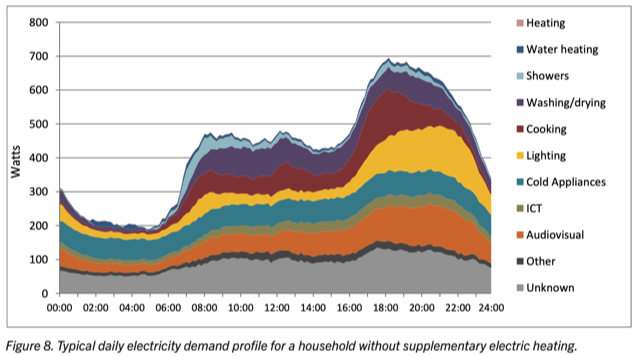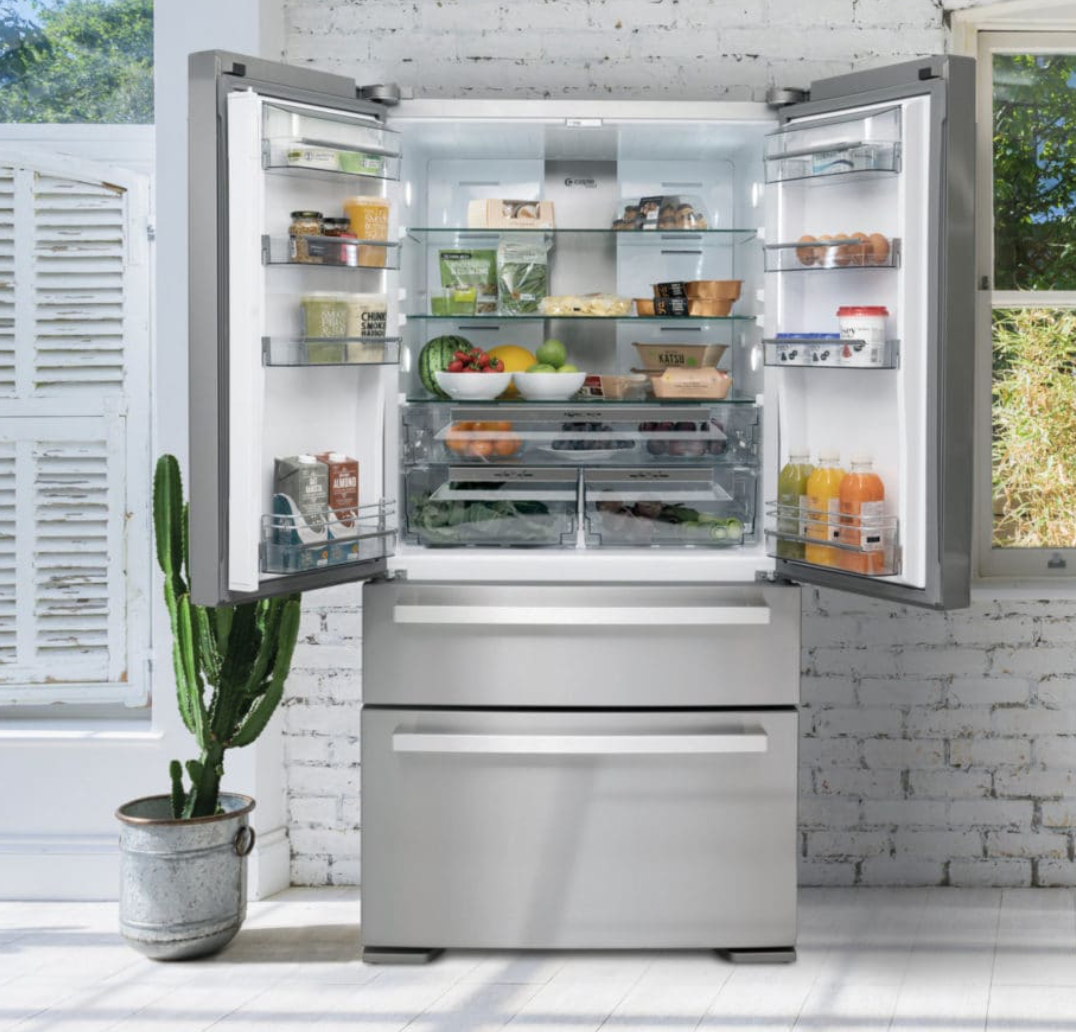The power of fridges
Fridges are a powerful free power source. How so? The average fridge freezer in the UK uses 408kWh of electricity per year.1
This average masks the way that a fridge turns on and off at different times of the day to maintain the temperature inside, and the fact that the moments it is consuming electricity can be shifted slightly without much of an impact on the household. At any one time, the average power usage of a fridge freezer is \(\frac{408}{365\times 24}=0.05kW\). Reflecting that the fridge might be off with some probability, or on and consuming 0.1kW or more at others.2
There are about 28 million households in the UK and nearly all have a fridge freezer. Thus the combined power usage of thise is \(28\times 0.05=1.4GW\). That’s more than the capacity of any of the UK’s nuclear power plants.3 Hence, briefly - say for about 30 minutes - switching off all fridges in the country is equivalent to switching on a nuclear power plant.
This would have the capacity to displace and shave off part of demand-peak as shown here:4

It could also be used at other times at short notice to minimize the overall cost of running the electricity system and/or its carbon intensity.
All it takes to make this operational is some automation technology like a POWBAL plug.5

According to Comparethemarket↩︎
See Qayyum, Fatima & Naeem, Muhammad & Khwaja, Ahmed & Guan, Ling & Venkatesh, B.. (2015). Appliance Scheduling Optimization in Smart Home Networks. IEEE Access. 3. 1-1. 10.1109/ACCESS.2015.2496117.↩︎
Different assumptions on coincidence factors or the load of a refrigerator can be made as in Goran Strbac, Demand side management: Benefits and challenges, Energy Policy, Volume 36, Issue 12, 2008, Pages 4419-4426, but taking averages over all households and the whole year means our estimates are within a similar range.↩︎